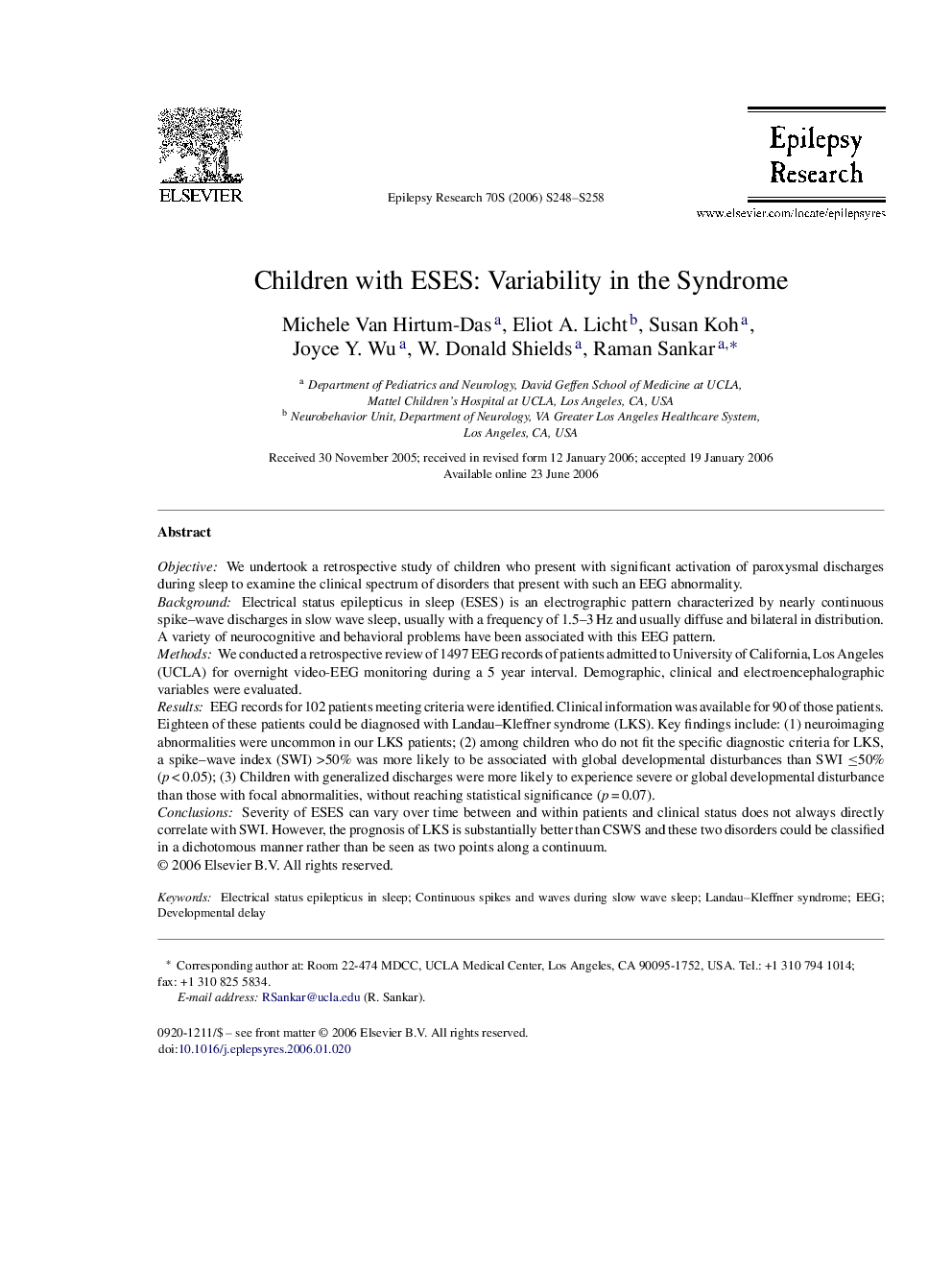| Article ID | Journal | Published Year | Pages | File Type |
|---|---|---|---|---|
| 3053342 | Epilepsy Research | 2006 | 11 Pages |
ObjectiveWe undertook a retrospective study of children who present with significant activation of paroxysmal discharges during sleep to examine the clinical spectrum of disorders that present with such an EEG abnormality.BackgroundElectrical status epilepticus in sleep (ESES) is an electrographic pattern characterized by nearly continuous spike–wave discharges in slow wave sleep, usually with a frequency of 1.5–3 Hz and usually diffuse and bilateral in distribution. A variety of neurocognitive and behavioral problems have been associated with this EEG pattern.MethodsWe conducted a retrospective review of 1497 EEG records of patients admitted to University of California, Los Angeles (UCLA) for overnight video-EEG monitoring during a 5 year interval. Demographic, clinical and electroencephalographic variables were evaluated.ResultsEEG records for 102 patients meeting criteria were identified. Clinical information was available for 90 of those patients. Eighteen of these patients could be diagnosed with Landau–Kleffner syndrome (LKS). Key findings include: (1) neuroimaging abnormalities were uncommon in our LKS patients; (2) among children who do not fit the specific diagnostic criteria for LKS, a spike–wave index (SWI) >50% was more likely to be associated with global developmental disturbances than SWI ≤50% (p < 0.05); (3) Children with generalized discharges were more likely to experience severe or global developmental disturbance than those with focal abnormalities, without reaching statistical significance (p = 0.07).ConclusionsSeverity of ESES can vary over time between and within patients and clinical status does not always directly correlate with SWI. However, the prognosis of LKS is substantially better than CSWS and these two disorders could be classified in a dichotomous manner rather than be seen as two points along a continuum.
